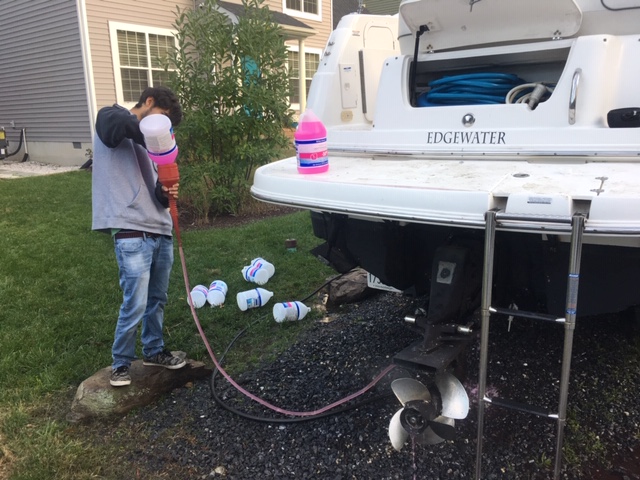

You may view them easier, for one thing, so it's a lot easier to see where the points are to empty your motor. On modern engines, most manufacturers are utilizing plastic drain plugs with a wing-nut you may remove easily. Here's why.Įarlier model engine cubes had brass plugs and you can't just twist them off with your fingers.

On older engines, there are pipe sockets in the base of the exhaust manifolds and other coolant passages, but it's still nearly impossible to get all of the water out of a block regardless of its era, which is the reason why businesses like MerCruiser recommend filling the cooling system using propylene glycol coolant. The concept is to get all remaining water out of the system so you can prevent damage brought on by freezing, which isn't covered by any warranties. Gradually reduce rpm to idle and shut engine off. Within this procedure, you disconnect the fuel line in the water separating fuel filter inlet and then join the distant outboard tank together with that fogging mix, and if the ship's from the water, then you need to hook your own water muffs to the faces of the lower unit, then run the motor in 1,300 rpm for five minutes. The proper process of fogging a carbureted engine is to take out the flame arrestor and run it at fast idle at 1,500 rpm, squirt 8 ounces of something such as Mercury Marine's Quicksilver Storage Seal or even a 20W engine into the principal venturis of the carburetor, then stall the engine by squirting the last 2 oz of the oil to the carburetor.įor fuel-injected motors, get a regular 6-gallon outboard gas tank and then put 5 gallons of regular 87-octane gas inside, put some two-cycle outboard oil in that tank and 5 oz of fuel stabilizer. It is crucial because when you shut off the motor, some of the valves - or vents in a lookup engine - will likely be amenable into the air and exhaust manifolds, which may invite moisture from the air or any humidity which stays in the exhaust system. When you've done that, it's time to fog the engine so that the cylinders can better resist corrosion within the winter. Now that you have the fuel system completed hook up a garden hose into your boat's cooling system and operate the engine at a fast idle therefore that the treated gas may get up into the carburetor's circuits.

Make certain to leave only a little bit from the tanks to complete the winterization procedure. If there's absolutely no fuel in the tank, it can not absorb water. Experts have gone back and forth on whether you need to drain or fill your tanks for winter storage, but the logic now is that it is better that tanks be empty due to the methanol content in modern fuels.Īlcohol is hydroscopic, so it attracts and absorbs water. Your first step, preparing the fuel for winter, has become much easier with gas injection, but it was not too hard with carburetors, so we'll cover. It'd be worse, however, to leave the engine oil in that has been conducted all season. Why? Because if you change the oil and filter, then run on the engine or engines to winterize the gas system, you're going to be unduly exposing the new oil into contaminants and byproducts of gas, which can cause increased breakdown within the wintertime. We all know that We Must stabilize the fuel, fog the electrons and change the oil and filter then drain the cooling of our motor (s) before we sip our boats out for the winter, but there is an arrangement of operations you Will Have to follow:
Winterizing an inboard boat motor professional#
Probably all OEM marine propulsion manufacturers would prefer that a trader tech perform your winterization procedure, but if you are going to do it yourself due to the expense of professional services - and also a great deal of folks do - here are some tips to help you do it correctly. Generally speaking, there are several considerations when winterizing your boat: Depending on how big your ship and the number of motors, it may cost between $500 and $1,000 to have your boat winterized for you, which explains exactly why a lot of people do it themselves.

It is an essential part of owning a boat. It's true, you must winterize your ship, and that is no matter if it's powered with a two-stroke, four-stroke, inboard, sterndrive or outboard.
Winterizing an inboard boat motor manual#
If you live in areas where it gets cold enough that you can not go drifting in the winter, this boat winterizing manual is right for you. If you reside in the southernmost regions of the United States, you can probably stop reading right now and chuckle with a smug sense of superiority that you may go boating all year round.


 0 kommentar(er)
0 kommentar(er)
